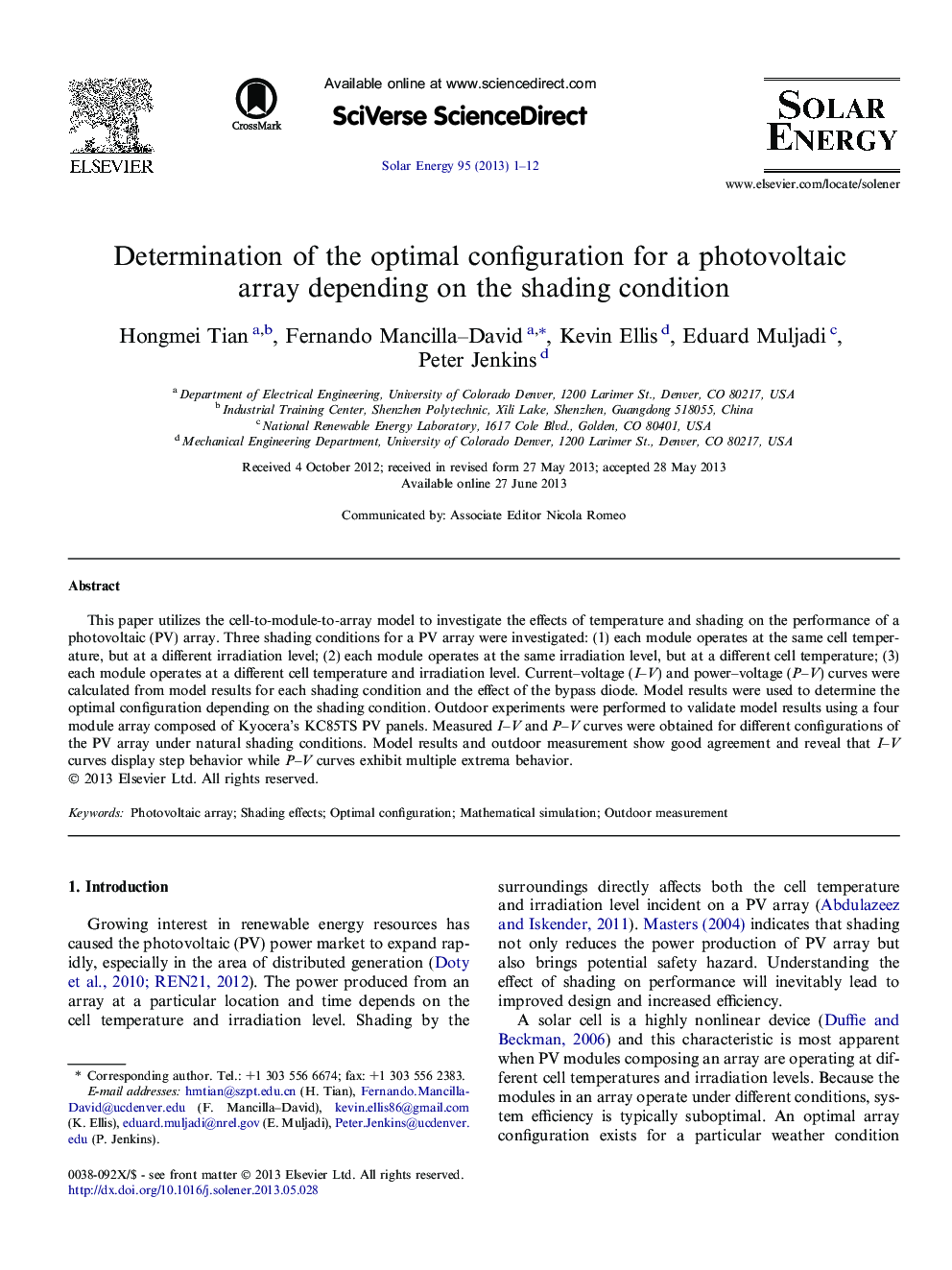| Article ID | Journal | Published Year | Pages | File Type |
|---|---|---|---|---|
| 1550566 | Solar Energy | 2013 | 12 Pages |
•Uses the cell-to-module-to-array model to study shading effects in photovoltaic arrays.•Allows determining the optimal configuration of a large solar array.•May set the stage to determine optimal location of reconfiguration switches.•Validation through experimental results.
This paper utilizes the cell-to-module-to-array model to investigate the effects of temperature and shading on the performance of a photovoltaic (PV) array. Three shading conditions for a PV array were investigated: (1) each module operates at the same cell temperature, but at a different irradiation level; (2) each module operates at the same irradiation level, but at a different cell temperature; (3) each module operates at a different cell temperature and irradiation level. Current–voltage (I–V) and power–voltage (P–V) curves were calculated from model results for each shading condition and the effect of the bypass diode. Model results were used to determine the optimal configuration depending on the shading condition. Outdoor experiments were performed to validate model results using a four module array composed of Kyocera’s KC85TS PV panels. Measured I–V and P–V curves were obtained for different configurations of the PV array under natural shading conditions. Model results and outdoor measurement show good agreement and reveal that I–V curves display step behavior while P–V curves exhibit multiple extrema behavior.
